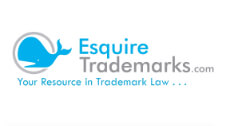International Trademark Applications and the Madrid Protocol
International Trademark Applications : The Madrid Protocol is an international trademark registration system set up by treaties with many foreign nations. The United States is a member of the Madrid Protocol. As such, U.S. trademark applicants can access the Madrid Protocol system to extend its trademark rights in over 100 jurisdictions including Canada, China, India, and the European Union.
A U.S. trademark holder can use the Madrid Protocol to manage and extend trademark rights worldwide – in a single language – often without the burden of hiring trademark counsel in each foreign country.
Another benefit is filing date priority. Under various treaties, a U.S. trademark applicant can extend its United States filing date to other countries. Many foreign jurisdictions will treat the foreign trademark application as filed on the US filing date – so long as the foreign application is filed within a set time period from the U.S. application (Typically 6 months).

Background on International Trademark Applications Extending from The United States
There are two common ways to extend trademark rights internationally. One way is to find and hire a trademark attorney in each country you wish to register your international trademark. This quickly becomes expensive and burdensome when you apply to register a trademark in 10 or 20 different countries. You have to retain and pay 10 or 20 different trademark attorneys in 10 or 20 different currencies – all different currencies – many international wire transfers. There’s also a language barrier those applying for international trademarks must overcome. That is, the international trademark applicant must find foreign trademark counsel who can communicate in both languages.
The easy way is to use the Madrid Protocol for Registration of International Trademarks. The Madrid Protocol enables application for trademarks in many foreign countries using one agency: The World Intellectual Property Organization. WIPO for short. WIPO communicates in the selected language of the applicant, and collects fees in a single currency (Swiss Francs). WIPO then transmits the international trademark applications to the designated countries. WIPO also receives communications from the foreign trademark offices and sends them to the applicant (or their trademark attorney). When it’s time to renew the international trademarks, this can be done directly through WIPO – rather than renewing with each foreign country via local trademark counsel.
The Madrid Protocol Often saves the effort of having to retain counsel in each country.
WIPO acts as a clearinghouse for international trademark applications and registrations. Often, the international applications are examined and registered without event. In this situation, you will receive all communications through WIPO. In the instance you receive an objection or refusal in one of the designated countries, the applicant then must hire counsel in the local jurisdiction to respond. In essence, the Madrid Protocol defers or altogether eliminates the need to hire foreign trademark counsel.
The Madrid Protocol Simplifies the International Trademark Process
The Madrid Protocol enables trademark attorneys in one country to apply for an international trademark application (with WIPO) and then designate one or more Member Countries for application and subsequent examination of the international trademark. WIPO requires an international trademark application and then transmits the application data to one or more of the Designated Countries for individual examination. WIPO’s international trademark application (or registration) is like a ticket for entry into a convention or trade show. You must get the ticket to have access to the Designated Countries.
Complications or Drawbacks With the Madrid Protocol International Trademark Process?
You May Have to Hire a Local Trademark Attorney in the Foreign Country if the Application is Rejected in the Designated Country.
Correct: An applicant is required to hire local trademark counsel if they wish to respond to an objection or rejection. We can assist with locating and communicating with a foreign trademark attorney if this happens. We have access to a network of international trademark attorneys.
You Are Required to Hire a Local Trademark Attorney if the US Trademark is refused or cancelled.
If the “Basic” Application or registration is refused or cancelled within the first 5 years after applying, WIPO can no longer act as the agency for facilitating trademark registration. Local counsel must be obtained, and the WIPO international application can be converted to domestic applications in the designated countries.
Hiring a Local Attorney at the Outset May Expedite the Process
In some instances, it is advantageous to hire a local attorney in the foreign country to initiate the trademark application. Local attorneys are more experienced in the nuances of the local trademark laws. Also, the Basic or Home Territory Application that creates the WIPO international trademark may include limitations or requirements that are not necessary in the foreign jurisdiction.
Changes to the US Trademark Application will affect the international trademark applications.
Because the US Trademark Application forms the basis for the WIPO international application, any changes to the US application are sent to the designated countries. For example, the US Trademark Office may require changes that restrict the goods or services. These restrictions will then be transmitted to WIPO and the designated countries. In other words, you are married to the US application that creates the basis for the international application.
